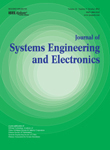Journal
Please choose volume & issue:
-
Reliability of Multi-Dimensional Network Systems with Nodes Having Stochastic Connection Ranges
Keywords:Stochastic processesReliability engineeringMaintenanceComplexity theoryReliabilityResource managementInternet of ThingsProtectionOptimizationNetwork systemsNetwork SystemSystem ReliabilityMultidimensional NetworkNumerical ExamplesInternet Of ThingsInfluence DiagramComplexity AnalysisDistance Matrix3D SpaceElements Of SystemProblem DescriptionNetwork FlowAd Hoc NetworksSink NodeTop Nodesmultidimensional networkmulti-valued decision diagramstochastic connection rangereliability analysisimportance measureAbstracts:This paper proposes a reliability evaluation model for a multidimensional network system, which has potential to be applied to the internet of things or other practical networks. A multidimensional network system with one source element and multiple sink elements is considered first. Each element can connect with other elements within a stochastic connection ranges. The system is regarded as successful as long as the source element remains connected with all sink elements. An importance measure is proposed to evaluate the performance of non-source elements. Furthermore, to calculate the system reliability and the element importance measure, a multi-valued decision diagram based approach is structured and its complexity is analyzed. Finally, a numerical example about the signal transfer station system is illustrated to analyze the system reliability and the element importance measure.
-
Multi-Round Dynamic Game Decision-Making of UAVs Based on Decision Tree
Keywords:SimulationHeuristic algorithmsAtmospheric modelingDecision makingGamesAutonomous aerial vehiclesNash equilibriumDecision treesVehicle dynamicsFlight dynamicsDecision TreeUnmanned Aerial VehiclesDynamic GameGame TheoryOptimal DecisionDecision ProblemNash EquilibriumDynamic DecisionDecision Tree MethodUnmanned Aerial Vehicle FlightFlight DynamicsGame DecisionsLearning AlgorithmsOptimization AlgorithmClassification TreeRoot NodeVelocity VectorEmergency SituationsTree ModelGini CoefficientDecision Tree AlgorithmDecision-making MethodYaw AngleRoll AnglePitch AngleEvidence TheoryPayoff FunctionSubtreeDecision-making ProblemsIndependent Validation Datasetunmanned aerial vehicle (UAV)multi-round confrontationdynamic game decisiondecision treeAbstracts:To address the confrontation decision-making issues in multi-round air combat, a dynamic game decision method is proposed based on decision tree for the confrontation of unmanned aerial vehicle (UAV) air combat. Based on game theory and the confrontation characteristics of air combat, a dynamic game process is constructed including the strategy sets, the situation information, and the maneuver decisions for both sides of air combat. By analyzing the UAV's flight dynamics and the both sides' information, a payment matrix is established through the situation advantage function, performance advantage function, and profit function. Furthermore, the dynamic game decision problem is solved based on the linear induction method to obtain the Nash equilibrium solution, where the decision tree method is introduced to obtain the optimal maneuver decision, thereby improving the situation advantage in the next round of confrontation. According to the analysis, the simulation results for the confrontation scenarios of multi-round air combat are presented to verify the effectiveness and advantages of the proposed method.
-
A Hybrid Genetic Algorithm to the Program Optimization Model Based on a Heterogeneous Network
Keywords:Heterogeneous networksPlanningGenetic algorithmsCostsOptimization modelsPROMHeuristic algorithmsComplexity theoryUncertaintyReviewsHeterogeneous NetworkHybrid Genetic AlgorithmEffects In ModelsDevelopment ProjectsLarge-scale ProjectsConstruction ProjectsHybrid AlgorithmJoint OperationsOptimization ProblemMulti-objective OptimizationSolution SpaceEdge WeightsSelection ProblemExact MethodSolution QualityHeuristic MethodConstruction Of SystemsWeibull DistributionAnalytic Hierarchy ProcessProjection ValuesMulti-objective Optimization ProblemNon-dominated Sorting Genetic AlgorithmProject CostObjective DimensionsNodes In CommunityBranch-and-bound MethodMultiple ProjectsMathematical Programming ModelSystems PerspectiveObjective Functionprogram optimizationheterogeneous networkgenetic algorithmportfolio selectionAbstracts:Project construction and development are an important part of future army designs. In today's world, intelligent warfare and joint operations have become the dominant developments in warfare, so the construction and development of the army need top-down, top-level design, and comprehensive planning. The traditional project development model is no longer sufficient to meet the army's complex capability requirements. Projects in various fields need to be developed and coordinated to form a joint force and improve the army's combat effectiveness, At the same time, when a program consists of large-scale project data, the effectiveness of the traditional, precise mathematical planning method is greatly reduced because it is time-consuming, costly, and impractical. To solve above problems, this paper proposes a rnulti-stage program optimization model based on a heterogeneous network and hybrid genetic algorithm and verifies the effectiveness and feasibility of the model and algorithm through an example. The results show that the hybrid algorithm proposed in this paper is better than the existing meta-heuristic algorithm.
Hot Journals
- Risk Breakdown Matrix for Risk-Based Inspection of Transportation Infrastructure Projects
- Social Control in Outsourced Architectural and Engineering Design Consulting Projects: Behavioral Consequences and Motivational Mechanism
- 2022 Best Paper Award
- Hold-Ups and Failures in Negotiated Order: Unearthing the Nuances of Rework Causation in Construction
- Prevalence and Risk Factors for Poor Mental Health and Suicidal Ideation in the Nigerian Construction Industry
- CFRP–Cable-Stayed Bridge Hybrid with Partial Suspension and a Span Exceeding 3,000 m: Concept, Optimization, and Construction
- Impact of Wind Load Characteristics on Computed Bridge Stay-Cable Forces Used for Bridge Health Monitoring
- Weak-End and Frequency Detection of Elastically Supported Bridges by Contact Residual Response of Two-Axle Test Vehicle in a Round Trip
- Development of Performance-Based Fragility Curves of Coastal Bridges Subjected to Extreme Wave-Induced Loads
- An Analytical Model to Evaluate Short- and Long-Term Performances of Post-Tensioned Concrete Box-Girder Bridges Rehabilitated by an Ultrahigh-Performance Concrete Overlay
- Three-Dimensional Velocity Distribution in Straight Smooth Channels Modeled by Modified Log-Law
- Experimental Investigation on Flow Past Two and Three Side-by-Side Inclined Cylinders
- An Experimental Investigation of Rotor–Box Aerodynamic Interaction 1
- Modeling Gas–Liquid Flow Between Rotating and Nonrotating Annular Disks
- Entry Length Requirements for Two- and Three-Dimensional Laminar Couette–Poiseuille Flows
Advanced Materials (3,745)
- Structured Perovskite Light Absorbers for Efficient and Stable Photovoltaics
- Strategies for High‐Performance Solid‐State Triplet–Triplet‐Annihilation‐Based Photon Upconversion
- Atomic Engineering Catalyzed MnO2 Electrolysis Kinetics for a Hybrid Aqueous Battery with High Power and Energy Density
- Crystal Adaptronics: Global Performance Indices for Dynamic Crystals as Organic Thermal Actuators (Adv. Mater. 20/2020)
- Enlightening Materials with Photoswitches
Acta Astronautica (1,768)
- Mixed-integer trajectory optimization with no-fly zone constraints for a hypersonic vehicle
- Adaptive control design for active Pogo suppression of large strap-on liquid launch vehicles
- Machine learning based approach for modeling and forecasting of GPS–TEC during diverse solar phase periods
- Effect of two-dimensional micro-cavity surface on hypersonic boundary layer
- Investigation on burning behaviors of aluminum agglomerates in solid rocket motor with detailed combustion model








 User Center
User Center My Training Class
My Training Class Feedback
Feedback





